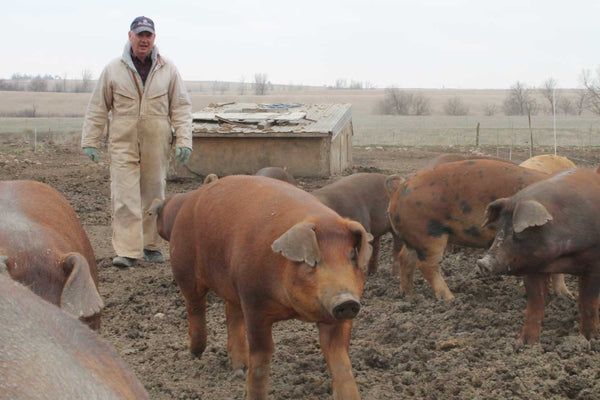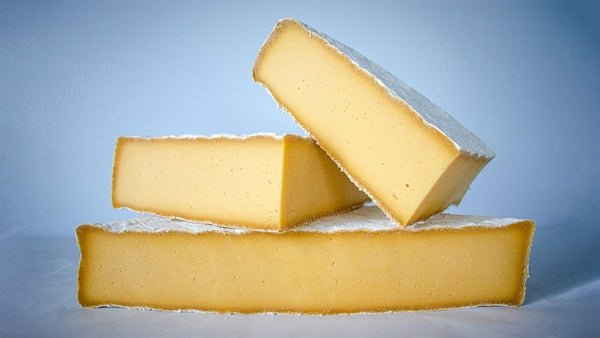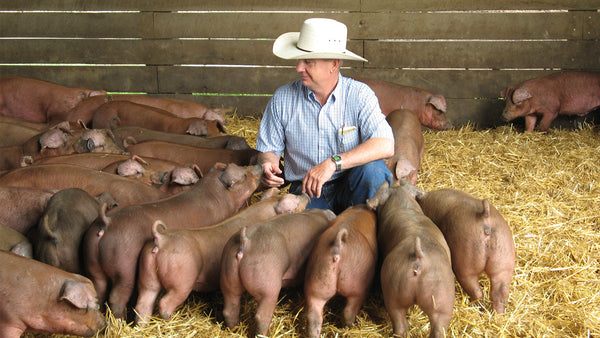
Though the Duroc breed evolved from red pigs from another part of the world, it is considered one of the few “all American” breeds we have today. Unlike most breeds of livestock that were developed elsewhere and brought here, the Duroc is the result of two red colored breeds being crossed and then improved upon in the early 18th century in upstate New York. Where those two original red breeds came from is the subject of much debate as there are no pigs native to the Americas. Today the Duroc is in many ways the perfect pig boasting excellent meat quality. It is rugged and durable and has a great ability to efficiently convert pounds of feed into pounds of high quality meat. Durocs can range from a light golden almost yellow color to a dark mahogany.

What strikes us most about Meadow Creek Dairy is that they produce only raw milk cheeses, three to be exact, in a tiny pocket of hills near Galax, Virginia just on the North Carolina border. Remarkably they rotate their all-female herd of 140 cows every twelve hours to keep the menu fresh!

In 2006 we got a handwritten letter from farmer Mark Newman asking us if Heritage Foods would ever consider selling his pasture raised old school Berkshire pigs. We said yes and a relationship grew that still continues today, now through his son David who has maintained the genetic line of Berkshires which can be traced back to the 17th and 18th century lines that came to these shores by way of the Berkshire region of England.

We met the Goods through a connection at Kansas State University where Craig’s father was a distinguished professor. Craig spent his life in agriculture growing up in the Flint Hills of Kansas, some of the best agricultural land in the world, perfectly adapted to free ranging livestock, which feed on the perennial grasses that grow there naturally.
© 2025, Heritage Foods Powered by Shopify
